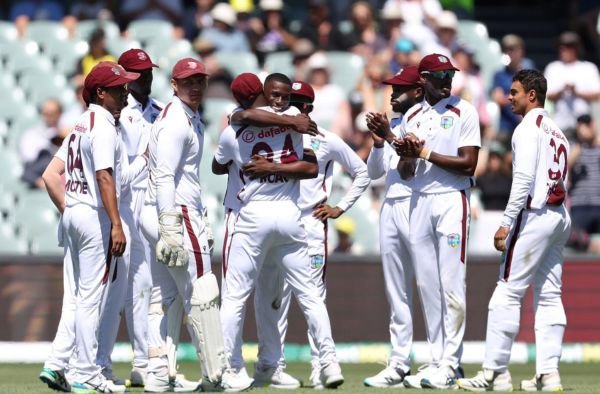Cricket fans, take note—there’s something exciting brewing in the Caribbean! The West Indies could soon host their first-ever pink-ball Test match against Australia, and the spotlight may shine on the Sabina Park stadium in Kingston, Jamaica.
Sounds pretty cool, right? But what exactly does this mean for cricket lovers, players, and the broader world of international Test cricket? Let’s break it down in simple terms.

What’s All the Buzz About Day-Night Test Matches?
Before we dive into the latest news, you might be wondering: what’s the big deal about a day-night Test match?
Traditionally, Test cricket matches are played during the day under natural light. But with busy schedules and modern lifestyles, many fans can’t spare five full days to follow a match during daylight hours. That’s where day-night Tests come in—they start in the afternoon and go into the evening under floodlights. And instead of the usual red ball, players use a pink ball for better visibility at night.
It’s like cricket’s version of prime-time television. More people can watch after work, and stadiums tend to fill up in the evenings. A win-win, right?
West Indies Is Ready—and Excited
According to recent reports, Cricket West Indies (CWI) is confident the upcoming Test series against Australia in mid July will include at least one day-night match. While the schedule isn’t locked in just yet, all signs point towards Sabina Park in Jamaica as the potential host for this historic encounter.
Why is this important? Because this would be the first pink-ball Test hosted by the West Indies on their home turf.
In the past, the region missed out on staging such games for various reasons—ranging from infrastructure challenges to scheduling conflicts. But this time, things are falling into place.
Why Sabina Park Makes Sense
If you’ve ever been to Jamaica (or even seen it on TV), you’ll know Sabina Park is one of the most iconic cricket grounds in the Caribbean. It’s been a cherished part of cricket history, hosting some legendary moments through the decades.
Now, with upgraded lighting systems and facilities, it’s ready to handle the demands of a day-night event.
Here’s why Sabina Park is a strong contender:
- Newly installed floodlights meet international standards
- Historic venue with a passionate local fan base
- Accessibility for international teams and broadcasters
It’s the kind of place where fans not only watch the game, but live it—dancing, singing, and cheering all day (and now, maybe even into the night).
Day-Night Test Experience: What Has Australia Seen So Far?
Australia is no stranger to pink-ball cricket. In fact, they’ve been involved in more day-night Tests than any other team. Since the debut of day-night Tests in 2015, the Aussies have made them a staple of their home summer calendars.
Their experience gives them a bit of an edge, no doubt. But the West Indies could see this as a golden opportunity to shake things up—especially with their younger, energetic squad that thrives under new challenges.
And honestly, wouldn’t it be great to see Caribbean cricket shine on a global stage under lights?
Financial and Fan Benefits: More Than Just Cricket
Now, from a financial and marketing perspective, a day-night match means more than just evening cricket.
Here’s how everyone wins:
- Higher TV ratings: Airing games during prime time draws in more viewers, including expats and fans from other regions.
- Increased ticket sales: Evening games are more accessible for working locals who can’t attend daytime matches.
- Boost to local tourism: Jamaica already has a thriving hospitality industry, and a marquee match could bring in extra visitors.
In short, it’s a recipe for visibility, revenue, and fan engagement.
What Does This Tell Us About the Future of West Indies Cricket?
Backing such an event signals a broader shift in the mindset of West Indies cricket. They’re not just preserving tradition—they’re adapting and innovating.
Let’s be real: the West Indies team has faced its fair share of ups and downs in recent years. But embracing day-night Tests, especially against a powerhouse like Australia, sends a message—they’re ready to evolve.
Think about it this way: cricket is like any other sport or business. If you don’t change with the times, you risk getting left behind.
CWI’s willingness to explore prime-time Test cricket is a nod to a more dynamic future—not just for the players, but for fans too.
Looking Ahead: What Could This Mean For Fans?
Imagine this: a warm Caribbean evening, the stands buzzing with music, fans waving flags, and the crack of the pink ball under the lights. That’s the kind of atmosphere that can breathe new life into Test cricket.
Day-night matches add a layer of drama that keeps you hooked—not just on the field, but in the crowd too. It’s not just about cricket; it’s about experience.
And for fans who may have felt disconnected from the long format, this could be a fun way to reconnect. A Friday evening session followed by a full weekend of nail-biting sessions under floodlights? Sign me up!
Final Thoughts: A Golden Chance for a Pink-Ball Spectacle
It’s not every day that West Indies gets the spotlight in Test cricket. But the prospect of hosting a day-night Test against a top-tier team like Australia? That’s special.
As one of cricket’s most colorful regions, the Caribbean has a golden opportunity to bring flair back into red-ball cricket—just with a pink twist.
So, will we see the pink ball glowing across Sabina Park soon? We sure hope so.